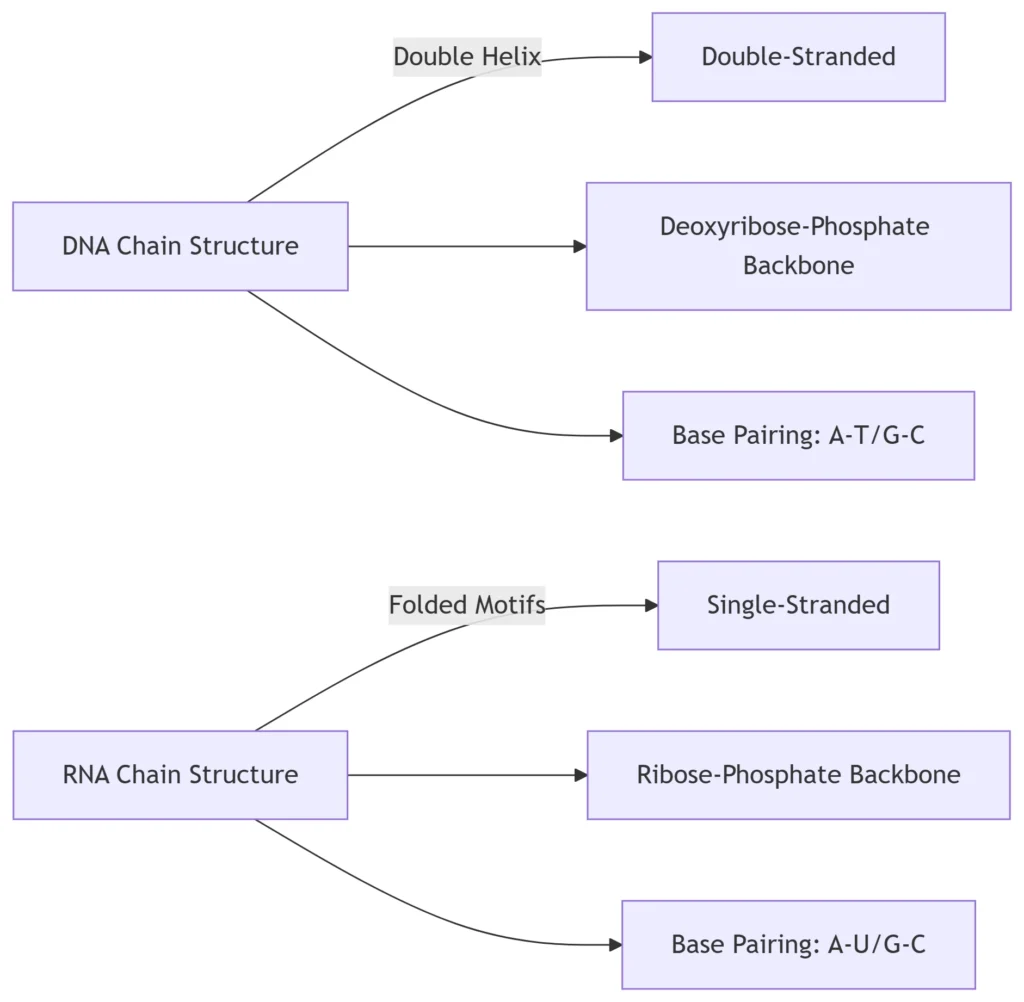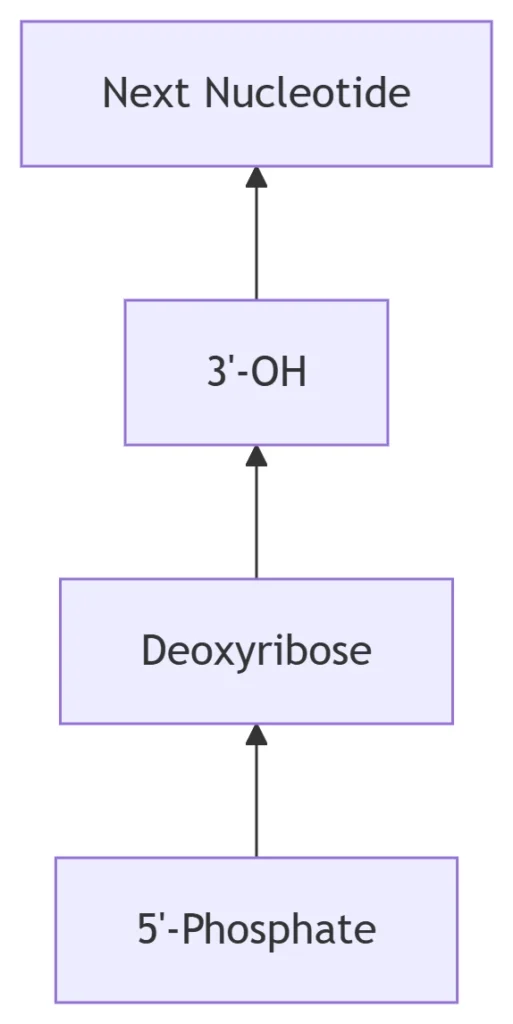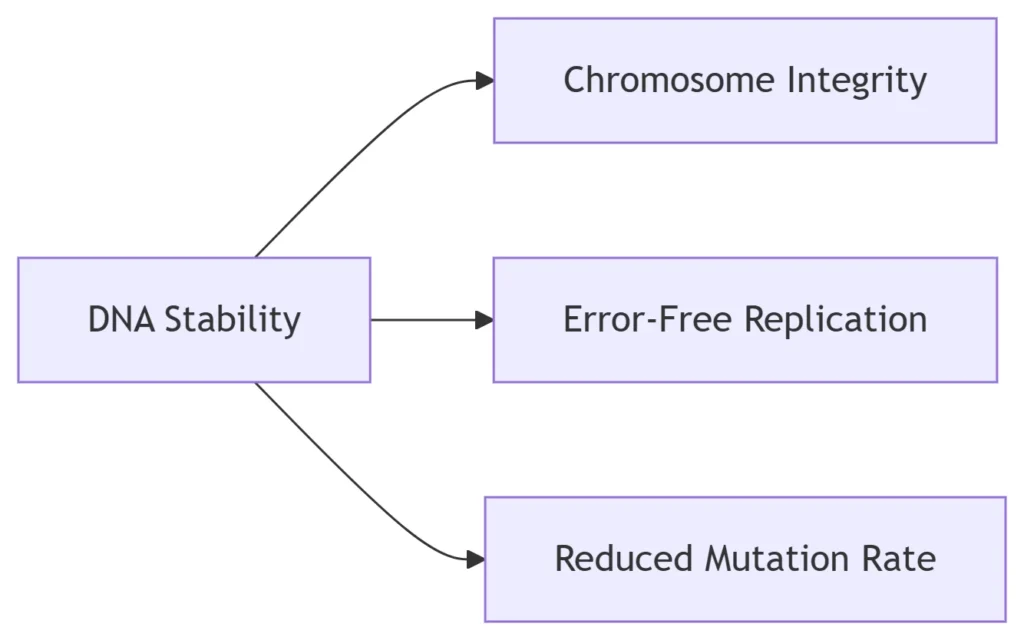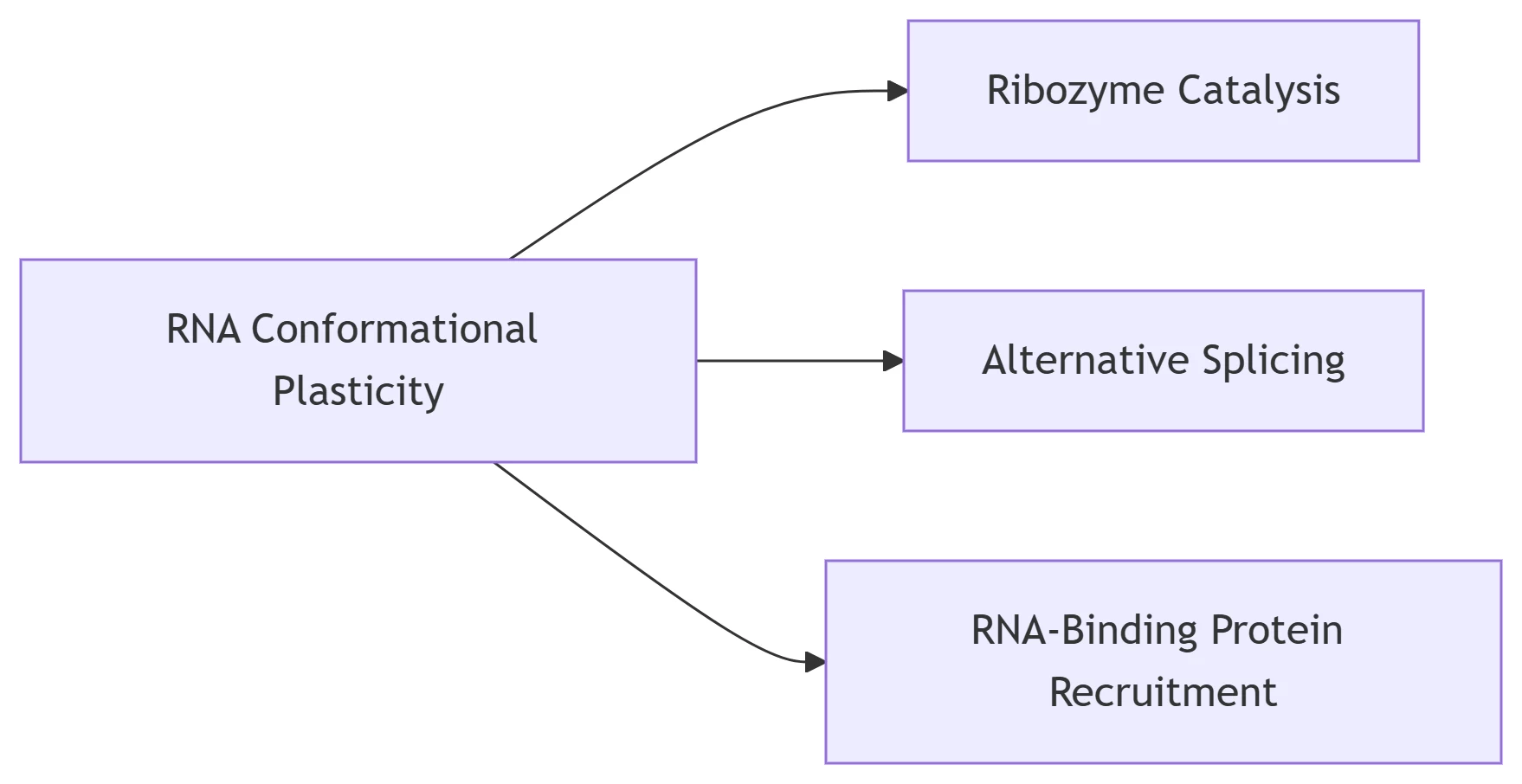Structural Divergence: DNA vs. RNA Chain Architecture
A Comparative Analysis of Nucleic Acid Frameworks

1. Backbone Chemistry: The Structural Scaffold
DNA (Deoxyribose Sugar):
-
2′-Deoxy Configuration: Lacks oxygen at 2′ carbon → enhanced hydrolysis resistance
-
B-Form Helix: Standard right-handed conformation (10.5 bp/turn)
-
Phosphodiester Linkages: C5′-C3′ connectivity forms “sided” grooves

RNA (Ribose Sugar):
-
2′-Hydroxyl Group: Creates steric hindrance → prevents stable double helix
-
A-Form Helix: Compact right-handed spiral (11 bp/turn) with tilted base pairs
-
Enhanced Flexibility: 2′-OH enables catalytic activity (ribozymes)
2. Strand Topology & Base Stacking
DNA Double Helix:

-
Antiparallel Strands: 5’→3′ orientation opposes complementary strand
-
Base Stacking: Hydrophobic core stabilizes structure (van der Waals forces)
-
Groove Specificity: Major groove permits protein recognition (e.g., transcription factors)
RNA Single-Strand Dynamics:

-
Secondary Structures:
-
Stem-loops: Short double-stranded regions (A-form)
-
Pseudoknots: Tertiary interactions between loops
-
-
Base Pairing: Non-canonical pairs (G-U wobble) enable structural diversity
3. Conformational Stability Metrics
Parameter DNA RNA Helix Diameter 20 Å 26 Å Rise per bp 3.4 Å 2.8 Å Persist. Length 500 nm (rigid) 70 nm (flexible) Tm (GC-rich) >100°C (high stability) ~80°C (nuclease-sensitive) Hydration Shell 20 H₂O/bp (minor groove) 11 H₂O/bp (variable)
4. Structural Consequences in Biology
DNA Stability Advantages:

RNA Functional Versatility:

5. Structural Variants & Exceptions
-
DNA Alternatives:
-
Z-DNA: Left-handed helix (CpG repeats)
-
G-quadruplexes: Four-stranded structures in telomeres
-
-
RNA Duplexes:
-
siRNA: 21-23 bp double-stranded regions
-
rRNA: Pseudoknotted domains in ribosomes
-
Key Structural Determinants of Function
Feature DNA Biological Impact RNA Biological Impact Double Helix Replication fidelity N/A (except viral dsRNA) 2′-OH Group N/A Ribosome peptidyl transferase activity Groove Dimensions Sequence-specific protein binding Electrostatic ligand recognition Base Tilt Helical packing in nucleosomes Catalytic center formation
Structural Summary Diagram

Conclusion
DNA’s double-helical structure provides genetic stability through standardized base stacking and dehydration resistance, while RNA’s ribose backbone and single-stranded nature enable conformational adaptability essential for catalytic and regulatory functions. These structural differences directly determine their biological roles: DNA serves as the unchanging genomic archive, whereas RNA operates as the dynamic executor of genetic information.
Data sourced from public references including:
-
Alberts B. Molecular Biology of the Cell (6th ed.)
-
Saenger W. Principles of Nucleic Acid Structure
-
PDB structural databases (1BNA, 4TNA)
For academic collaboration or content inquiries, contact: chuanchuan810@gmail.com
-
